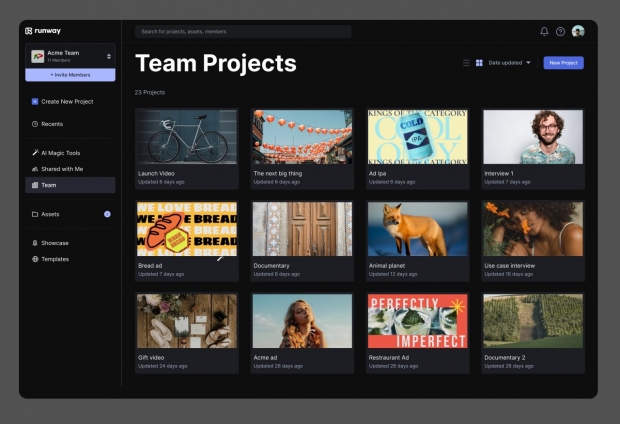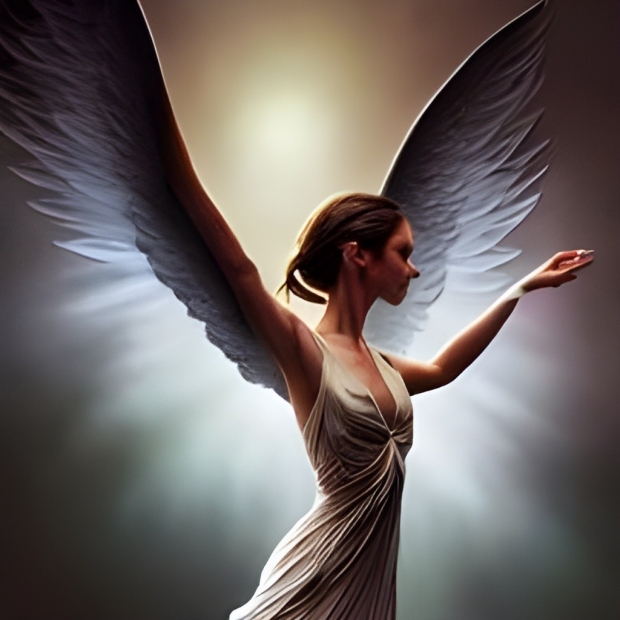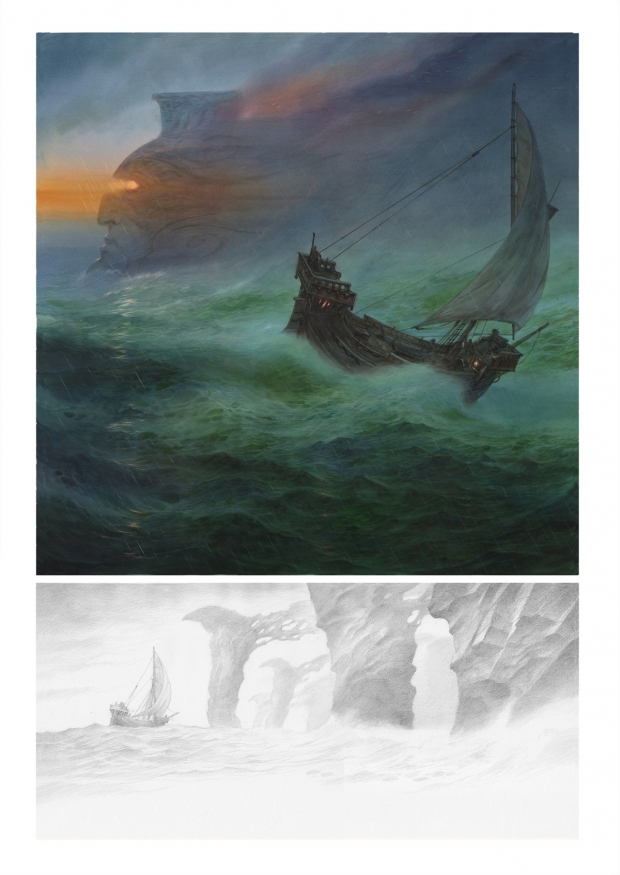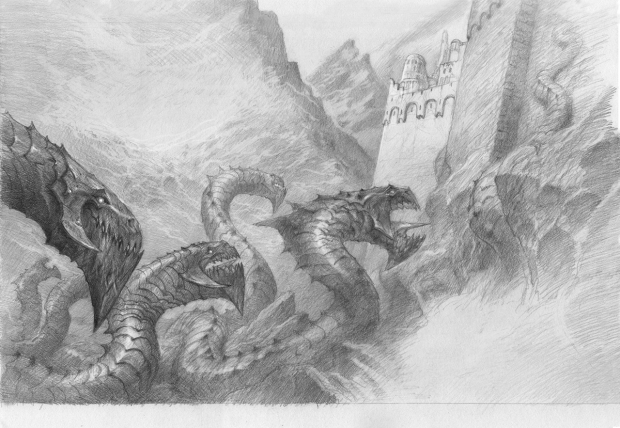Noted ‘Lord of the Rings’ illustrator John Howe, Runway co-founder and CEO Cristóbal Valenzuela, and DeepAI founder Kevin Baragona weigh in on ethical and legal challenges facing the creation and commercial use of AI-generated imagery.
The topic of Artificial Intelligence - AI – has dominated the news of late in almost every aspect of contemporary society and culture. Safe to say, the use, and societal impact, of AI will only grow as it moves from laboratories into the hands of the masses. The key to its development is the quality and quantity of the training dataset that the general public has generously provided for free in the digital construct known as the Internet. Far from becoming the belligerent self-aware entity determined to eradicate the human race, AI is already raising ethical concerns about job loss and how the dataset is determined and collected with or without permission. Data provenance is sketchy at best. And right now, there is an opportunity to redefine the creative process as the technology radically alters the skillset required to produce a piece of art where prowess with linguistics circumvents the ability to wield a pencil or brush.
But does mechanizing artwork take away the mystique or expand the talent pool of creativity? “I can see AI becoming a game-changing influence, depending on the parameters of concept art,” notes John Howe who has gained international acclaim for his The Lord of the Rings illustrations. “So much concept art is all about generating options quickly, and AI seems particularly well-adapted to that. I find that real design is not always about flashy and impressive visual tricks, but about consistency of vision and the ability to invent something novel. I am not sure AI can do that… yet.”
Among those leading development of the next generation of creative tools with AI is Cristóbal Valenzuela, co-founder and CEO of Runway. “The early iteration of Runway enabled users to deploy and run machine learning models easily. We knew this emerging technology needed to be more accessible and it needed to be tested, so that’s where we started. As we saw patterns emerge with how our early users were leveraging our product, we realized that there was a lot of opportunity to expand into video and serve the full video production process. We wanted to help automate a lot of the manual and tedious processes that plagued creatives using AI as the engine, so we started focusing on solutions and tools within video specifically. In addition to our core video editing tools, we have a suite of generative AI Magic Tools for video, image, sound, text, and 3D to serve the entire creative process. We always expected AI to transform storytelling and the creative industry as a whole, so we’ve been ready to build new tools to help democratize creativity and make it as accessible and easy as possible, to as many people as possible.”
Significant legal issues have been raised about ownership of AI art output and whether original sources should be given credit. “That is the million-dollar question!” believes Howe. “Legally, according to their terms and conditions, the images generated belong to the company that owns the AI that created them. I doubt very much that the user can claim any ownership. I have been sent countless examples of images created using my name as keyword prompts. Some are actually quite good, others far less convincing, but, like all computer-based technology, it will undoubtedly rapidly improve. I cannot realistically imagine the users of AI crediting any original sources. A good place to begin would be to bar the input of the names of living artists as keywords. It is possible that AI, when used to generate texts, for which it is far easier to determine copyright infringement, may help speed through legislation which could be used to regulate image-generation.”
Contentious arguments on copyright questions concerning AI models will continue between governments and lawyers for the next two decades, believes Kevin Baragona, founder, DeepAI. “It’s a seriously complex issue that defies simple solutions. Current generative AI technology does not have the ability to detect which source artists it’s generating from, and I have reason to be skeptical it will ever be possible. Current industry consensus is that raw AI outputs are generally not copyrightable as only human-created works can be copyrighted, but there are fine lines and gray areas that make this very confusing.”
For example, deepfakes should require permission from the source person. “Deepfakes remove any ability for us to trust what we see online or in media,” notes Baragona. “Some groups are working on cameras that create verified signatures, but I don’t believe it’s possible to solve in general. Unfortunately, the cat is probably out of the bag. We should be probably be passing new laws to defend against the negative uses of this tech.”
Debates about the merits of technological innovation and whether it cheapens the creative process are nothing new, as was the case with the introduction of Adobe Photoshop, which has gone on to become the industry standard for digital imagining.
“I recall that!” remarks Howe. “I was interviewed about the future of digital art back in the day, and of course I made all manner of ill-advised declarations which were rapidly proved to be nonsense! I believe that AI will be unavoidable, but not necessarily indispensable. Without a doubt, it will change art paradigms profoundly. It also questions the actual process of making art. Do artists only skillfully recompose, rework and stir together existing art, as does AI, or do they possess something more? I imagine the crucial question in everyone’s mind is: “Will this put me out of work?” I fear the answer is that quite possibly it will. Imagine a producer with a low art department development budget and a production designer with no particular ideas in mind, the temptation would clearly be to subscribe to an AI platform instead of hiring a concept artist. Nonetheless, I am confident we will learn to live with AI. It is, after all, here to stay.”
AI is yet another technological stepping stone. “The AI art wave is actually the beginning phase of a real metaverse,” observes Baragona. “When we move from static images, to generating life-like interactive 3D worlds, we’ll be pretty close! We also see signs that both AGI [Artificial General Intelligence] and AI superintelligence are quite possible, and the world they may create is beyond comprehension.” The true rise of generative AI is on the horizon. “We believe that in the near future you will be able to completely generate every element of a feature film: actors, voices, cinematography, score, and b-roll, all of it,” remarks Valenzuela. “The tools that we are seeing emerge today are building towards that ultimate rise of Generative AI that will enable a new class of filmmakers and video creation possibilities. It will revolutionize industries forever. The best movies are yet to be made.”





















